The Monitoring of Black-Odor River by Electronic Nose with Chemometrics for pH, COD, TN, and TP
Abstract
:1. Introduction
2. Materials and Methods
2.1. Sample Collection and Preparation
2.2. Water Quality Analysis
2.2.1. Total Phosphorous and Total Nitrogen
2.2.2. pH and Chemical Oxygen Demand
2.3. Electronic Nose Detection
2.3.1. Linear Discriminant Analysis
- d-dimensional mean vectors are computed from the original dataset, which includes different classes (6 groups in this study);
- Compute the between-class-matrix and within-class-matrix;
- Compute the eigenvectors and corresponding eigenvalues from between-class-matrix and within-class-matrix;
- Sort the eigenvectors by decreasing eigenvalues and choose k eigenvectors with the largest eigenvalues.
- Use the eigenvector matrix to transform the samples onto the new subspace. The original data can be projected to minimize the variance in the same group and maximize the distance in the different groups.
2.3.2. Partial Least Squares Regression
- w ∝ ETu (estimate X weights);
- t ∝ Ew (estimate X factor scores);
- c ∝ FTt (estimate Y weights);
- u = Fc (estimate Y scores).
2.3.3. Analysis of Variance–Partial Least Squares Regression
2.4. Software
3. Results and Discussion
3.1. The Water Quality Parameters of Black Odors River Based on Conventional Analytical Methods
3.2. Response Curves of E-Nose Sensors for Black-Odor River Water Samples
3.3. Analysis of Black-Odor River Water Samples by the E-Nose System
3.3.1. Recognition of Black-Odor River Water Samples Based on Linear Discriminant Analysis (LDA)
3.3.2. Correlation between Water Quality Parameters and E-Nose Sensor Signals
3.3.3. Prediction of Quality Parameters of Black-Odor River Samples Based on PLSR
4. Conclusions
- (1)
- The values of pH, COD, and TN and TP contents of the Yueliang River obtained by chemical detection methods showed no correlation with each other according to Tukey’s HSD test. The data distribution showed no significant pattern along the stretch of the Yueliang River sampled in this study.
- (2)
- Correlations among E-nose sensor signals differed according to Pearson correlation matrix analysis, which means that information obtained from different sensors overlapped. ANOVA-PLSR results indicated that the E-nose sensors are cross-sensitive to specific compounds but fail to show relationships with all quality characteristics.
- (3)
- Based on LDA, the E-nose system recognized the samples with 100% accuracy in the original data and cross-validation procedure. In addition, we used the PLSR model to reduce the risk of multicollinearity in the 10 E-nose sensors. For water quality parameter predictions, the coefficients between the actual water quality parameters (pH, COD, and TN and TP contents) and the predicted values were very high (R2 > 0.90) in both the training and testing sets. This means that the E-nose technology successfully predicted the black-odor river water parameters using headspace gas measurements.
Author Contributions
Funding
Institutional Review Board Statement
Informed Consent Statement
Data Availability Statement
Acknowledgments
Conflicts of Interest
References
- Cao, J.; Sun, Q.; Zhao, D.; Xu, M.; Shen, Q.; Wang, D.; Wang, Y.; Ding, S. A critical review of the appearance of black-odorous waterbodies in China and treatment methods. J. Hazard. Mater. 2020, 385, 121511. [Google Scholar] [CrossRef]
- IVES. Pollution of Thames Estuary. J. R. Soc. Promot. Health 1961, 6, 299. [Google Scholar]
- Rakowska, M.I.; Kupryianchyk, D.; Harmsen, J.; Grotenhuis, T.; Koelmans, A.A. In situ remediation of contaminated sediments using carbonaceous materials. Environ. Toxicol. Chem. 2012, 31, 693–704. [Google Scholar] [CrossRef] [PubMed]
- Ghosh, U.; Luthy, R.G.; Cornelissen, G.; Werner, D.; Menzie, C.A. In-situ Sorbent Amendments: A New Direction in Contaminated Sediment Management. Environ. Sci. Technol. 2011, 45, 1163–1168. [Google Scholar] [CrossRef]
- Arshak, K.; Moore, E.; Lyons, G.M.; Harris, J.; Clifford, S. A review of gas sensors employed in electronic nose applications. Sens. Rev. 2004, 24, 181–198. [Google Scholar] [CrossRef] [Green Version]
- Cao, J.; Liu, T.; Chen, J.; Yang, T.; Zhu, X.; Wang, H. Drift Compensation on Massive Online Electronic-Nose Responses. Chemosensors 2021, 9, 78. [Google Scholar] [CrossRef]
- Supchocksoonthorn, P.; Thongsai, N.; Moonmuang, H.; Kladsomboon, S.; Jaiyong, P.; Paoprasert, P. Label-free carbon dots from black sesame seeds for real-time detection of ammonia vapor via optical electronic nose and density functional theory calculation. Colloids Surf. A Physicochem. Eng. Asp. 2019, 575, 118–128. [Google Scholar] [CrossRef]
- Gómez, A.H.; Wang, J.; Hu, G.; Pereira, A.G. Monitoring storage shelf life of tomato using electronic nose technique. J. Food Eng. 2008, 85, 625–631. [Google Scholar] [CrossRef]
- Mohd Ali, M.; Hashim, N.; Abd Aziz, S.; Lasekan, O. Principles and recent advances in electronic nose for quality inspection of agricultural and food products. Trends Food Sci. Technol. 2020, 99, 1–10. [Google Scholar] [CrossRef]
- Saidi, T.; Moufid, M.; de Jesus Beleño-Saenz, K.; Welearegay, T.G.; El Bari, N.; Lisset Jaimes-Mogollon, A.; Ionescu, R.; Bourkadi, J.E.; Benamor, J.; El Ftouh, M.; et al. Non-invasive prediction of lung cancer histological types through exhaled breath analysis by UV-irradiated electronic nose and GC/QTOF/MS. Sens. Actuators B Chem. 2020, 311, 127932. [Google Scholar] [CrossRef]
- Okur, S.; Sarheed, M.; Huber, R.; Zhang, Z.; Heinke, L.; Kanbar, A.; Wöll, C.; Nick, P.; Lemmer, U. Identification of Mint Scents Using a QCM Based E-Nose. Chemosensors 2021, 9, 31. [Google Scholar] [CrossRef]
- Jiarpinijnun, A.; Osako, K.; Siripatrawan, U. Visualization of volatomic profiles for early detection of fungal infection on storage Jasmine brown rice using electronic nose coupled with chemometrics. Measurement 2020, 157, 107561. [Google Scholar] [CrossRef]
- Anyfantis, A.; Blionas, S. Proof of concept apparatus for the design of a simple, low cost, mobile e-nose for real-time victim localization (human presence) based on indoor air quality monitoring sensors. Sens. Bio-Sens. Res. 2020, 27, 100312. [Google Scholar] [CrossRef]
- Fan, H.; Bennetts, V.H.; Schaffernicht, E.; Lilienthal, A.J. A cluster analysis approach based on exploiting density peaks for gas discrimination with electronic noses in open environments. Sens. Actuators B Chem. 2018, 259, 183–203. [Google Scholar] [CrossRef] [Green Version]
- Ameer, Q.; Adeloju, S.B. Polypyrrole-based electronic noses for environmental and industrial analysis. Sens. Actuators B Chem. 2005, 106, 541–552. [Google Scholar] [CrossRef]
- ESPA. Water Quality—Determination of Total Phoshorus—Ammonium Molybdate Spectrophotometric Method; Standards Press of China: Beijing, China, 1989; GB 11893-89. [Google Scholar]
- SEPA. Water Quality—Determination of Total Nitrogen—Alkaline Potassium Persulfate Digestion—UV Spectrophotometric Method; Standards Press of China: Beijing, China, 1986; GB 11894-89. [Google Scholar]
- SEPA. Water Quality—Determination of pH Value—Glass Electrode Method; Standards Press of China: Beijing, China, 1986; GB 6980-86. [Google Scholar]
- SEPA. Water Quality—Determination of the Chemical Oxygen Demand—Dichromate Method; Standards Press of China: Beijing, China, 1986; GB 11914-89. [Google Scholar]
- Hidayat, S.N.; Triyana, K.; Fauzan, I.; Julian, T.; Lelono, D.; Yusuf, Y.; Ngadiman, N.; Veloso, A.C.; Peres, A.M. The Electronic Nose Coupled with Chemometric Tools for Discriminating the Quality of Black Tea Samples In Situ. Chemosensors 2019, 7, 29. [Google Scholar] [CrossRef] [Green Version]
- Łagód, G.; Duda, S.M.; Majerek, D.; Szutt, A.; Dołhańczuk-Śródka, A. Application of Electronic Nose for Evaluation of Wastewater Treatment Process Effects at Full-Scale WWTP. Processes 2019, 7, 251. [Google Scholar] [CrossRef] [Green Version]
- Farris, S.; Buratti, S.; Benedetti, S.; Rovera, C.; Casiraghi, E.; Alamprese, C. Influence of Two Innovative Packaging Materials on Quality Parameters and Aromatic Fingerprint of Extra-Virgin Olive Oils. Foods 2021, 10, 929. [Google Scholar] [CrossRef]
- Dess, B.W.; Small, G.W. Committee classifier based on linear discriminant analysis for the detection of radioisotopes from airborne gamma-ray spectra. J. Environ. Radioact. 2020, 217, 106217. [Google Scholar] [CrossRef]
- Straus, J.; Skogestad, S. A new termination criterion for sampling for surrogate model generation using partial least squares regression. Comput. Chem. Eng. 2019, 121, 75–85. [Google Scholar] [CrossRef]
- Thissen, U.; Wopereis, S.; van den Berg, S.A.A.; Bobeldijk, I.; Kleemann, R.; Kooistra, T.; van Dijk, K.W.; van Ommen, B.; Smilde, A.K. Improving the analysis of designed studies by combining statistical modelling with study design information. BMC Bioinformat. 2009, 10, 52. [Google Scholar] [CrossRef] [PubMed] [Green Version]
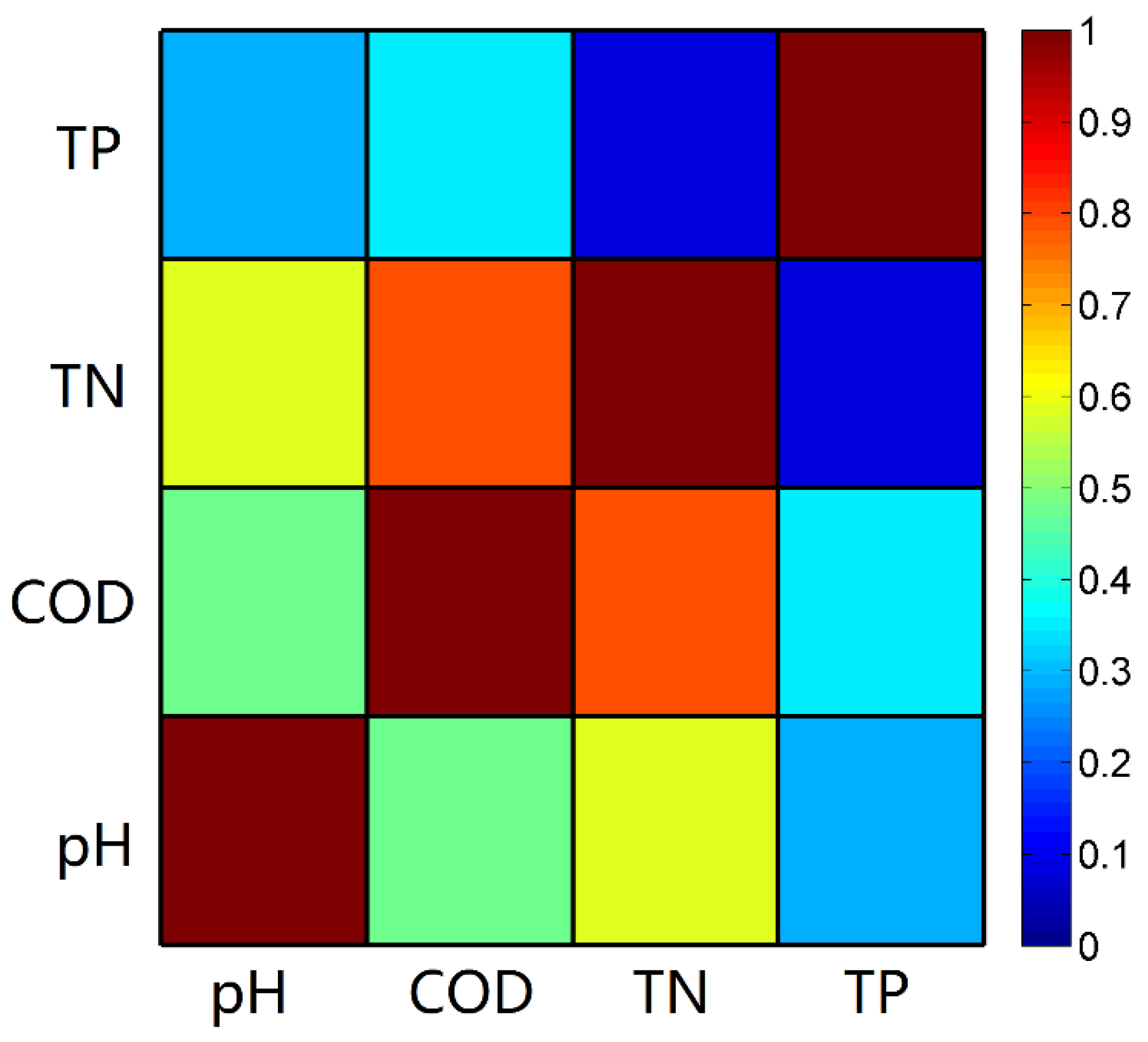
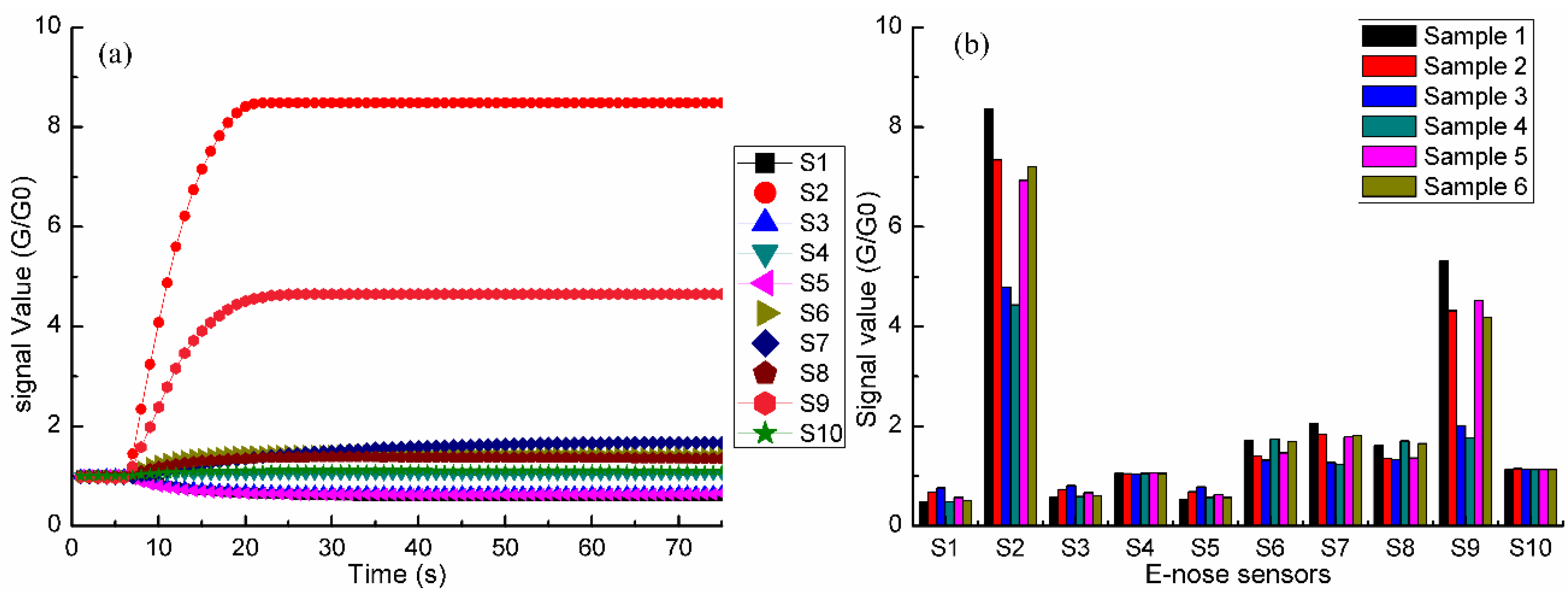
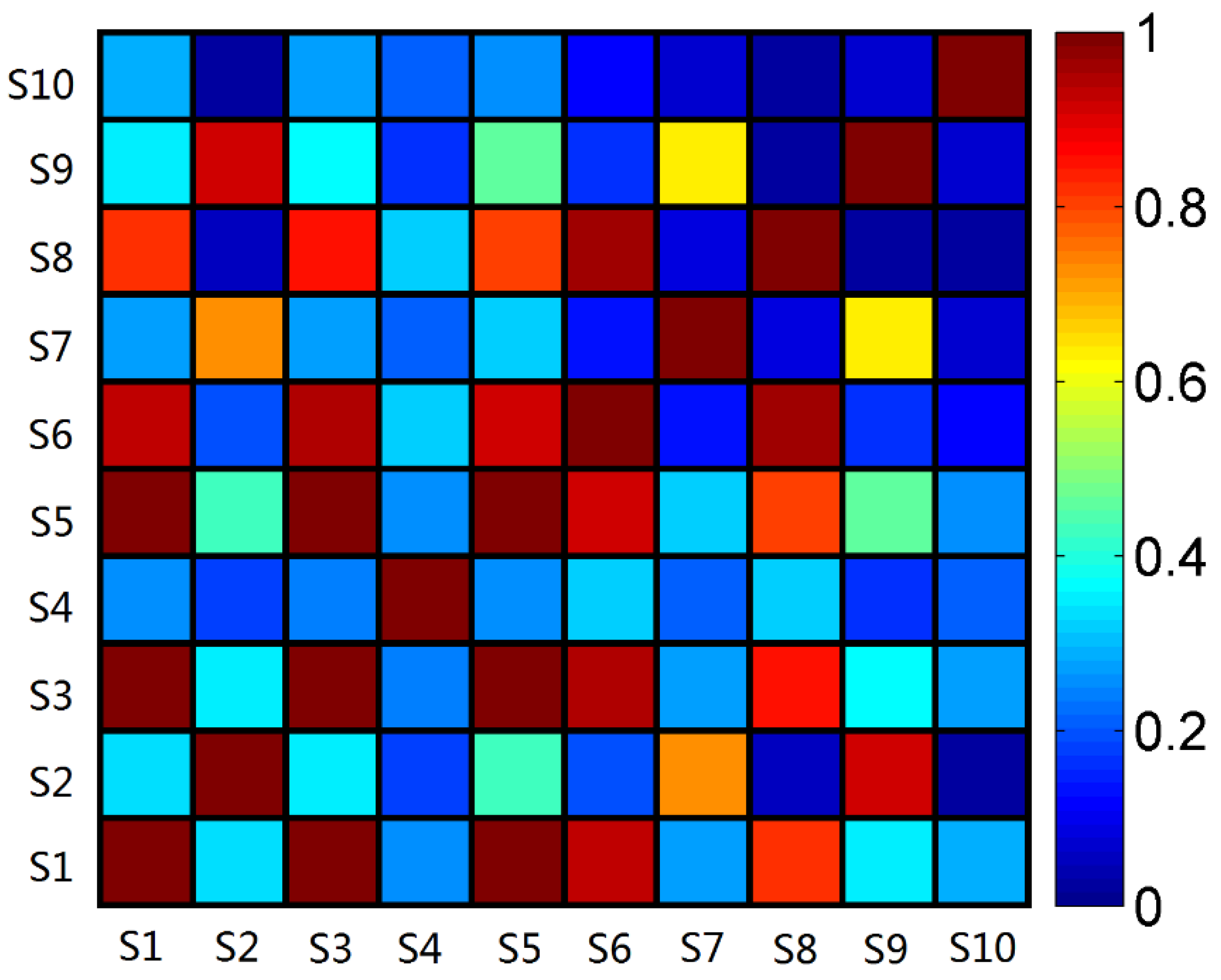
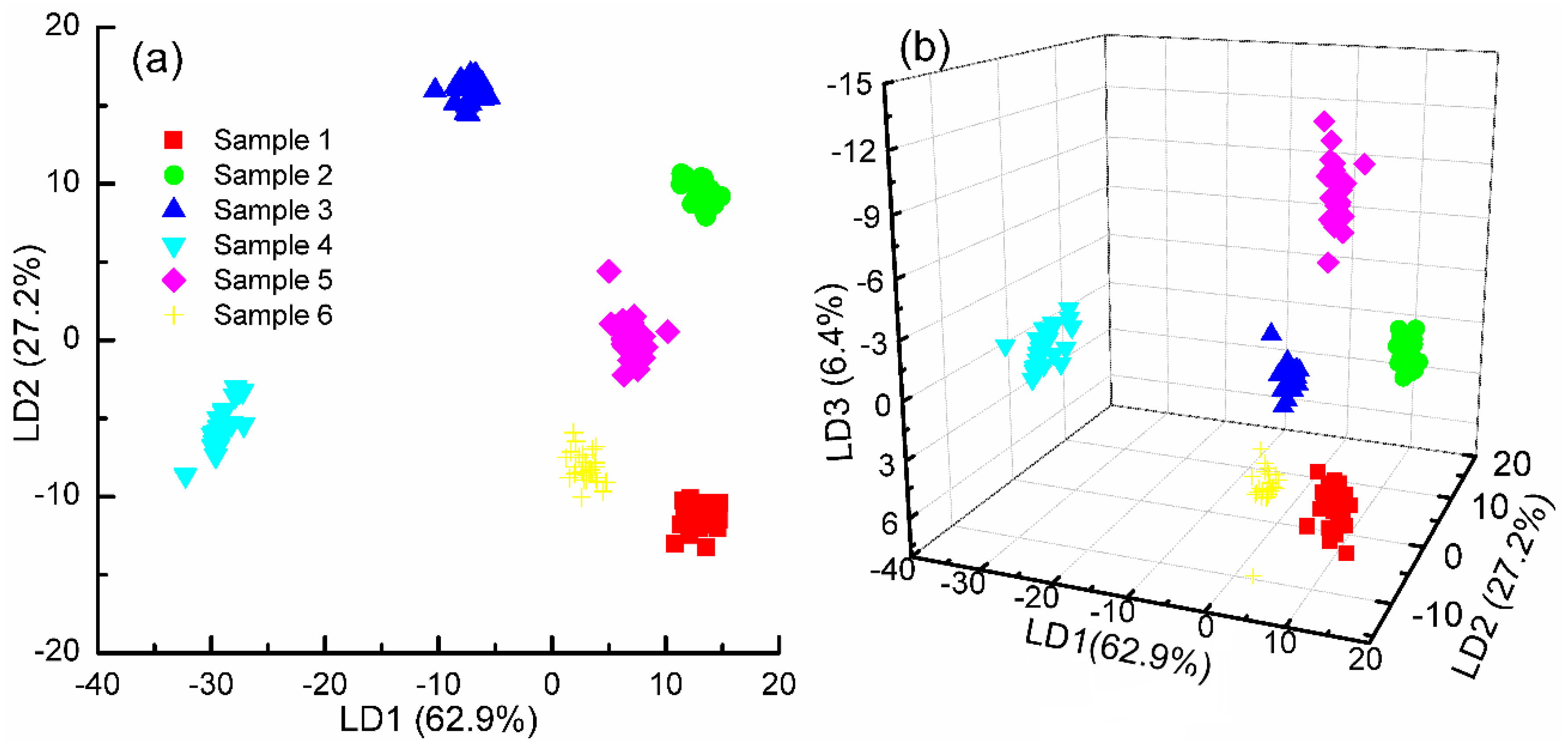
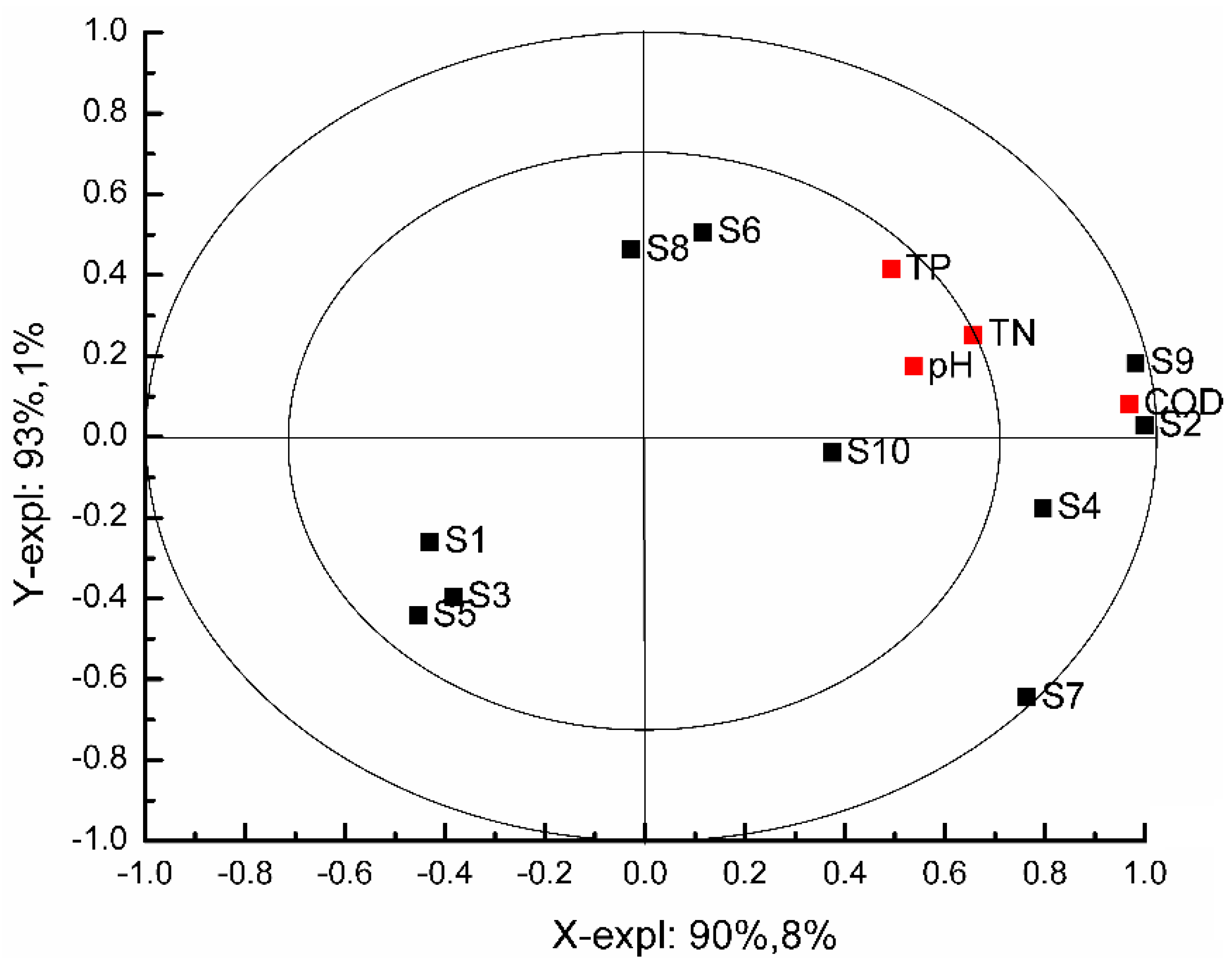

| No. | Sensor Name | General Description | Reference |
|---|---|---|---|
| S1 | W1C | Aromatic compounds | Toluene, 0.1 g/kg |
| S2 | W5S | Very sensitive with negative signal, broad range sensitivity, react on nitrogen oxides | NO2, 1 × 10−3 g/kg |
| S3 | W3C | Very sensitive with aromatic compounds | Benzene, 1 × 10−2 g/kg |
| S4 | W6S | Mainly hydrogen, selectively, (breath gases) | H2, 0.1 g/kg |
| S5 | W5C | Alkanes, aromatic compounds, less polar compounds | Propane, 1 × 10−3 g/kg |
| S6 | W1S | Sensitive to methane (environment). Broad range, similar to S8; | CH3, 0.1 g/kg |
| S7 | W1W | Reacts on sulfur compounds, or sensitive to many terpenes and sulfur organic compounds; | H2S, 1 × 10−4 g/kg |
| S8 | W2S | Detects alcohol’s, partially aromatic compounds, broad range | CO, 0.1 g/kg |
| S9 | W2W | Aromatics compounds, sulfur organic compounds | H2S, 1 × 10−3 g/kg |
| S10 | W3S | Reacts on high concentrations >0.1 g/kg, sometime very selective (methane) | CH3, 0.1 g/kg |
| No. | pH | COD (mg/L) | TN (mg/L) | TP (mg/L) |
|---|---|---|---|---|
| Sample 1 | 7.7 ± 0.3 a | 115 ± 4 b | 29.5 ± 3.2 a | 1.81 ± 0.31 a |
| Sample 2 | 7.2 ± 0.1 a | 100 ± 5 c | 26.1 ± 2.5 ab | 1.62 ± 0.23 a |
| Sample 3 | 7.3 ± 0.2 a | 82 ± 4 d | 20.2 ± 3.1 b | 1.51 ± 0.22 a |
| Sample 4 | 7.4 ± 0.1 a | 50 ± 2 e | 25.0 ± 1.6 ab | 1.34 ± 0.34 a |
| Sample 5 | 7.5 ± 0.2 a | 134 ± 5 a | 27.0 ± 2.1 ab | 1.69 ± 0.42 a |
| Sample 6 | 7.4 ± 0.1 a | 73 ± 3 d | 21.0 ± 2.5 b | 2.13 ± 0.35 a |
| Training Data | Testing Data | |||
|---|---|---|---|---|
| R2 | RMSE | R2 | RMSE | |
| pH | 0.9489 | 0.0355 | 0.9137 | 0.0515 |
| COD | 0.9888 | 3.8406 | 0.9720 | 8.5404 |
| TN | 0.9486 | 0.7418 | 0.9447 | 0.9426 |
| TP | 0.9658 | 0.0458 | 0.9008 | 0.0789 |
Publisher’s Note: MDPI stays neutral with regard to jurisdictional claims in published maps and institutional affiliations. |
© 2021 by the authors. Licensee MDPI, Basel, Switzerland. This article is an open access article distributed under the terms and conditions of the Creative Commons Attribution (CC BY) license (https://creativecommons.org/licenses/by/4.0/).
Share and Cite
Qiu, S.; Hou, P.; Huang, J.; Han, W.; Kang, Z. The Monitoring of Black-Odor River by Electronic Nose with Chemometrics for pH, COD, TN, and TP. Chemosensors 2021, 9, 168. https://doi.org/10.3390/chemosensors9070168
Qiu S, Hou P, Huang J, Han W, Kang Z. The Monitoring of Black-Odor River by Electronic Nose with Chemometrics for pH, COD, TN, and TP. Chemosensors. 2021; 9(7):168. https://doi.org/10.3390/chemosensors9070168
Chicago/Turabian StyleQiu, Shanshan, Pingzhi Hou, Jingang Huang, Wei Han, and Zhiwei Kang. 2021. "The Monitoring of Black-Odor River by Electronic Nose with Chemometrics for pH, COD, TN, and TP" Chemosensors 9, no. 7: 168. https://doi.org/10.3390/chemosensors9070168
APA StyleQiu, S., Hou, P., Huang, J., Han, W., & Kang, Z. (2021). The Monitoring of Black-Odor River by Electronic Nose with Chemometrics for pH, COD, TN, and TP. Chemosensors, 9(7), 168. https://doi.org/10.3390/chemosensors9070168






